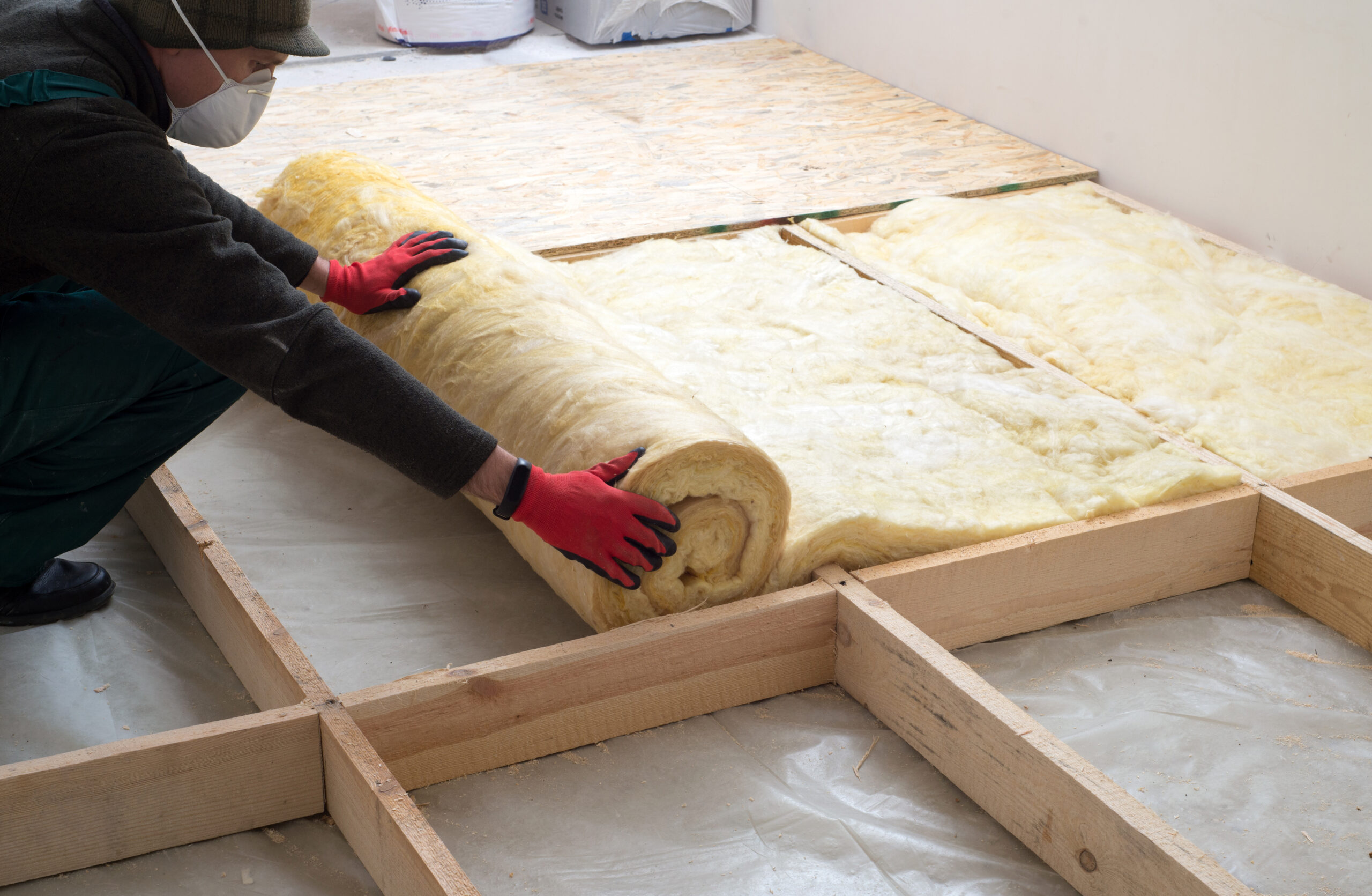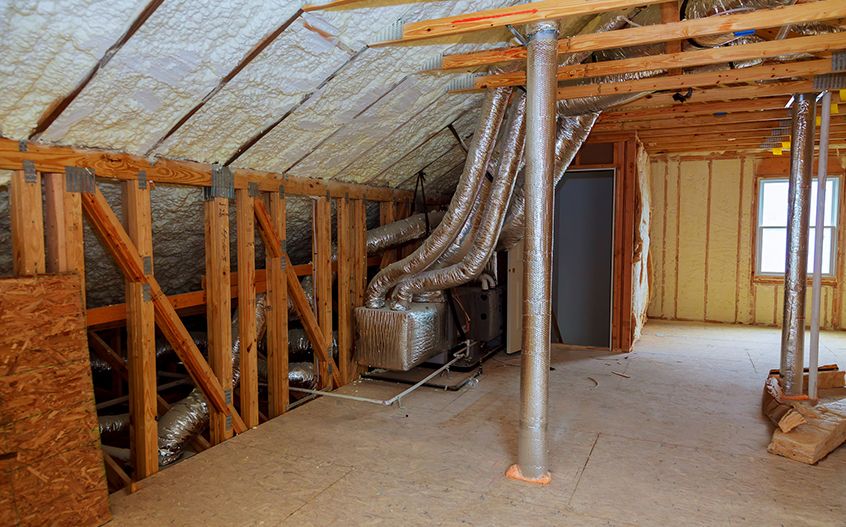Poor air-sealing in a home leads to energy loss that often goes unnoticed—until the utility bill arrives. Whether it’s gaps around windows, unsealed attic hatches, or leaky ductwork, the cost of unmanaged airflow accumulates quickly. Heating and cooling systems are forced to run longer, cycle more often, and consume more energy to maintain indoor comfort.
This article explains how poor air-sealing affects home efficiency and why it directly contributes to higher heating and cooling costs. Readers will learn where leaks are most common, how they impact HVAC performance, and what can be done to reduce energy waste without relying on guesswork or expensive upgrades.
How Air-Sealing Affects HVAC Efficiency
Uncontrolled Airflow Increases HVAC Run Time
When outdoor air freely enters and conditioned air escapes, your heating and cooling system must work harder. The system cycles more frequently to keep the indoor temperature stable, especially during peak summer or winter periods. Over time, this not only raises energy usage but also wears down the equipment faster.
Why HVAC Systems Struggle With Leaky Envelopes
- Constant air exchange prevents the system from reaching a steady-state efficiency
- Indoor temperature fluctuates, triggering more frequent heating or cooling
- Excessive humidity or dryness adds load to air handlers and compressors

Energy Loss Through Gaps and Cracks
Even small cracks around baseboards, plumbing penetrations, or attic pull-down stairs can let out significant amounts of conditioned air. These leaks collectively cause serious energy loss over a year.
Common Sources of Air Leaks
- Attic access doors or hatches
- Recessed lighting without proper insulation
- Gaps in rim joists
- Unsealed window and door frames
- Leaky ductwork in unconditioned spaces
The U.S. Department of Energy estimates that air leaks can account for 20% to 40% of heating and cooling energy loss in a typical home.
The Role of Building Envelope and Air Infiltration
Understanding the Thermal Envelope
The thermal envelope includes the walls, roof, floor, windows, doors, and insulation—essentially everything that separates the inside from the outside. A compromised envelope allows outside air in and lets indoor air escape.
Why Envelope Integrity Matters
- Maintains consistent indoor temperature
- Reduces HVAC cycling and energy use
- Prevents drafts and improves comfort
- Supports better humidity control
When homes lack proper sealing, the building envelope becomes porous, undermining the entire HVAC system’s effectiveness.
Measuring Air Infiltration
One effective way to measure leakage is a blower door test, which depressurizes the home and identifies air leak sources. Homes with poor air-sealing often exceed the recommended air changes per hour (ACH) rating, which is a direct measure of infiltration rate.

Recommended ACH Values for Energy Efficiency
| Home Type | ACH (target) | Impact on HVAC |
|---|---|---|
| Older Homes | 5–10 ACH | High HVAC load |
| Energy Star Certified | ≤ 3 ACH | Improved performance |
| Passive House Standard | ≤ 0.6 ACH | Minimal energy waste |
Financial Impact of Poor Air-Sealing
Higher Monthly Energy Bills
The financial effect of poor sealing becomes most apparent during periods of extreme weather. Even with an efficient furnace or air conditioner, leaky homes often incur higher utility bills.
Estimated Annual Cost Increase from Air Leaks
- 15%–25% more on heating and cooling
- Hundreds of dollars annually in colder climates
- Additional maintenance costs for overworked HVAC systems
A well-sealed home not only uses less energy but reduces wear and tear on expensive mechanical systems.
HVAC Equipment Lifespan is Reduced
Because heating and cooling systems in leaky homes operate more often and longer than necessary, their components degrade faster. Motors, compressors, and heat exchangers are all sensitive to overuse, leading to premature system failure.
Signs of HVAC Strain From Air Leaks
- Short cycling (frequent on/off behavior)
- Inconsistent indoor temperature
- Frequent service calls or repairs
- Noisy operation or rattling
Hidden Comfort and Health Issues
Drafts and Uneven Room Temperatures
A poorly sealed home doesn’t just cost more to condition—it often can’t keep rooms comfortable. Occupants might notice rooms that are always too hot or too cold compared to others, despite running the HVAC system at full tilt.
Typical Symptoms of Air-Sealing Problems
- Cold floors in winter, especially near exterior walls
- Hot upstairs rooms during summer
- Noticeable drafts near windows or door frames
Indoor Air Quality Can Be Affected
When air enters uncontrolled through cracks, it often carries dust, allergens, mold spores, or pollutants from crawlspaces and attics. This can reduce indoor air quality, especially for households with allergies or respiratory issues.
Common Questions
What are the most common air leak locations in older homes?
Attic bypasses, rim joists, and unsealed window frames are among the most common leak points. Older homes often lack modern air-sealing methods, making them prone to uncontrolled airflow.
Can air leaks make HVAC sizing less accurate?
Yes. HVAC systems are typically sized based on the home’s square footage and insulation. Significant air leakage throws off these calculations, making systems either too large or too small for actual performance needs.
How do I know if my home needs better air-sealing?
Signs include high utility bills, rooms that never seem to reach the set temperature, or noticeable drafts. A blower door test or thermal imaging scan can confirm where leaks are occurring.
Does sealing air leaks really reduce energy use, even with old insulation?
Yes. Even without upgrading insulation, sealing leaks prevents conditioned air from escaping and reduces how hard your HVAC system has to work. It’s often the most cost-effective energy-saving step.
Conclusion
Poor air-sealing causes far more than just minor discomfort—it creates a continuous drain on your heating and cooling Insulation. From overworked furnaces to frequent thermostat adjustments, the impact touches every part of the home’s energy use and livability. Small gaps in the building envelope can lead to hundreds of dollars in avoidable energy costs each year.
Addressing air leakage is one of the most practical ways to improve home efficiency. Sealing common problem areas like attic accesses, window frames, and rim joists reduces HVAC run time, improves temperature control, and enhances indoor air quality. The upfront effort pays long-term dividends in comfort, health, and cost savings.
FAQs
What is the best way to find air leaks in a home?
A blower door test is the most effective method. It uses a high-powered fan to depressurize the home, allowing technicians to detect even small leaks with precision.
Can I seal air leaks myself, or do I need a professional?
Many air leaks—like those around doors and windows—can be sealed with caulk, foam, or weatherstripping. However, more complex issues in attics or crawlspaces may require professional attention.
Will sealing air leaks make my HVAC system more efficient?
Yes. A well-sealed home reduces the demand on your HVAC system, allowing it to maintain temperature more consistently and with less effort.
Are energy savings immediate after air-sealing?
In most cases, homeowners notice lower energy bills within the first billing cycle after comprehensive sealing work is completed.
Do new homes still need air-sealing?
Yes. While newer homes are built to tighter standards, poor construction practices or settling can still lead to leaks over time. Testing and sealing may still be necessary.
Reviewer: Jack Parker, a spray foam professional with 7 years of experience, reviewed this post and helped improve sections dealing with brand clarity and customer communication.









